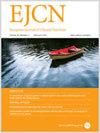Mobile phone applications for 3-dimensional scanning and digital anthropometry: a precision comparison with traditional scanners
IF 3.6
3区 医学
Q2 NUTRITION & DIETETICS
引用次数: 0
Abstract
The precision of digital anthropometry through 3-dimensional (3D) scanning has been established for relatively large, expensive, non-portable systems. The comparative performance of modern mobile applications is unclear. Forty-six adults (age: 23.3 ± 5.3 y; BMI: 24.4 ± 4.1 kg/m2) were assessed in duplicate using: (1) a mobile phone application capturing two individual 2D images, (2) a mobile phone application capturing serial images collected during a subject’s complete rotation, (3) a traditional scanner with a time of flight infrared sensor collecting visual data from a subject being rotated on a mechanical turntable, and (4) a commercial measuring booth with structured light technology using 20 infrared depth sensors positioned in the booth. The absolute and relative technical error of measurement (TEM) and intraclass correlation coefficient (ICC) for each method were established. Averaged across circumferences, the absolute TEM, relative TEM, and ICC were (1) 0.9 cm, 1.5%, and 0.975; (2) 0.5 cm, 0.9%, and 0.986; (3) 0.8 cm, 1.5%, and 0.974; and (4) 0.6 cm, 1.1%, and 0.985. For total body volume, these values were (1) 2.2 L, 3.0%, and 0.978; (2) 0.8 L, 1.1%, and 0.997; (3) 0.7 L, 0.9%, and 0.998; and (4) 0.8 L, 1.1%, and 0.996, with segmental volumes demonstrating higher relative errors. A 3D scanning mobile phone application involving full rotation of subjects in front of a smartphone camera exhibited similar reliability to larger, less portable, more expensive 3D scanners. In contrast, larger errors were observed for a mobile scanning application utilizing two 2D images, although the technical errors were acceptable for some applications.用于三维扫描和数字人体测量的手机应用:与传统扫描仪的精度比较。
背景:通过三维(3D)扫描进行数字人体测量的精确性已在相对大型、昂贵、非便携式系统中得到证实。现代移动应用的比较性能尚不明确:对 46 名成年人(年龄:23.3 ± 5.3 岁;体重指数:24.4 ± 4.1 kg/m2)进行了一式两份的评估,评估方法包括:(1) 使用手机应用软件捕捉两张单独的二维图像;(2) 使用手机应用软件捕捉在受测者完全旋转过程中收集的序列图像;(3) 使用传统扫描仪,该扫描仪配有飞行时间红外传感器,可收集在机械转盘上旋转的受测者的视觉数据;(4) 使用商业测量间,该测量间采用结构光技术,在测量间内安装了 20 个红外深度传感器。确定了每种方法的绝对和相对测量技术误差(TEM)以及类内相关系数(ICC):各周长的绝对 TEM、相对 TEM 和 ICC 平均值分别为:(1) 0.9 厘米、1.5% 和 0.975;(2) 0.5 厘米、0.9% 和 0.986;(3) 0.8 厘米、1.5% 和 0.974;以及 (4) 0.6 厘米、1.1% 和 0.985。在全身体积方面,这些数值分别为:(1) 2.2升、3.0%和0.978;(2) 0.8升、1.1%和0.997;(3) 0.7升、0.9%和0.998;以及(4) 0.8升、1.1%和0.996:结论:手机三维扫描应用涉及在智能手机摄像头前将受试者完全旋转,其可靠性与体积更大、便携性更差、价格更昂贵的三维扫描仪相似。相比之下,使用两张二维图像的手机扫描应用的误差较大,尽管某些应用的技术误差是可以接受的。
本文章由计算机程序翻译,如有差异,请以英文原文为准。
求助全文
约1分钟内获得全文
求助全文
来源期刊
CiteScore
10.60
自引率
2.10%
发文量
189
审稿时长
3-6 weeks
期刊介绍:
The European Journal of Clinical Nutrition (EJCN) is an international, peer-reviewed journal covering all aspects of human and clinical nutrition. The journal welcomes original research, reviews, case reports and brief communications based on clinical, metabolic and epidemiological studies that describe methodologies, mechanisms, associations and benefits of nutritional interventions for clinical disease and health promotion.
Topics of interest include but are not limited to:
Nutrition and Health (including climate and ecological aspects)
Metabolism & Metabolomics
Genomics and personalized strategies in nutrition
Nutrition during the early life cycle
Health issues and nutrition in the elderly
Phenotyping in clinical nutrition
Nutrition in acute and chronic diseases
The double burden of ''malnutrition'': Under-nutrition and Obesity
Prevention of Non Communicable Diseases (NCD)

 求助内容:
求助内容: 应助结果提醒方式:
应助结果提醒方式:


